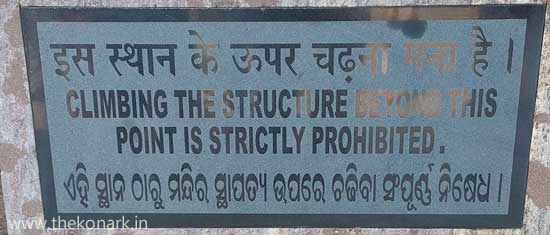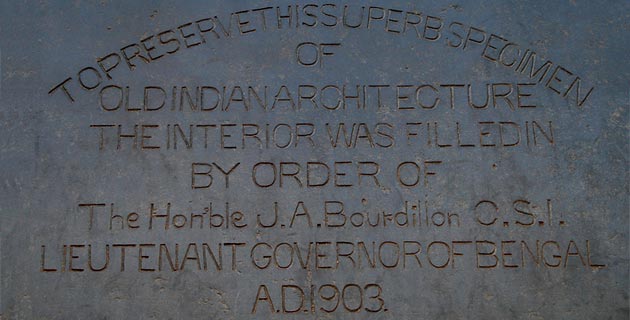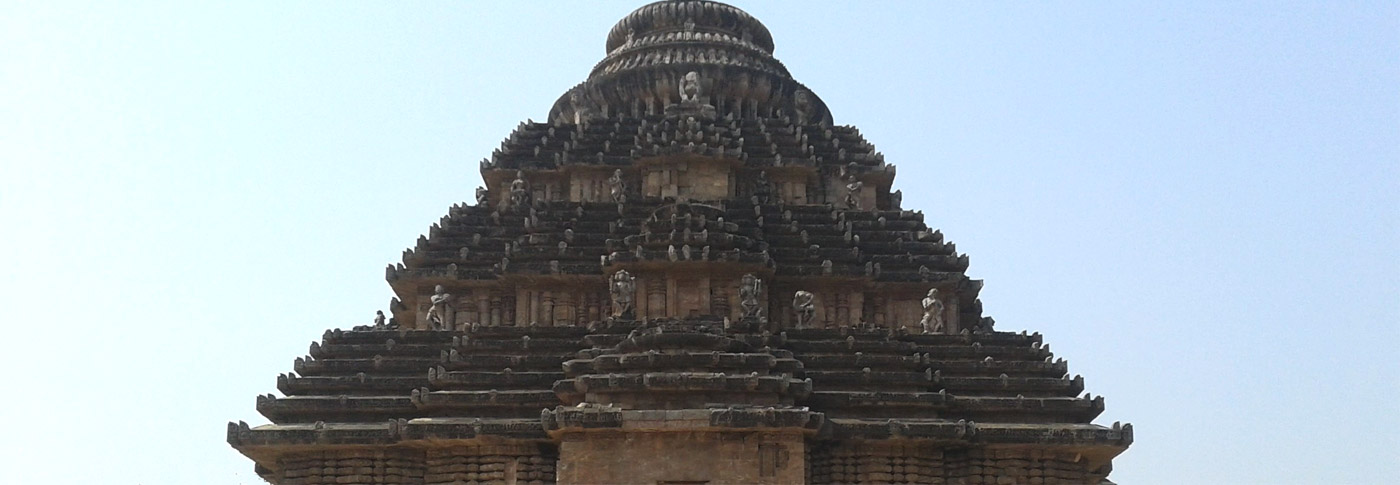

The large structure of Konark Sun Temple seen today is actually the frontal porch or the Jagamohana of the temple. The main temple tower which enshrined the presiding deity has fallen off and only the remains can be seen. The Jagamohana is meant for sheltering the devotees and is also known as the assembly hall, gathering hall or audience hall. In local Odia language it is also called 'Mukhasala' or 'Mukhamandapa'. The word 'Jagamohana' is a combination of two words 'Jaga' and 'Mohana'. 'Jaga' means 'World' and 'Mohana' means 'something which pleases', so when combines it becomes 'Something which pleases the whole world'.

Jagamohana is the only complete visible structure which we see today. The height of the Jagamohana is nearly 39 meters (128 feet). Due to its massive structure, it dominates the entire temple landscape and is visible from many miles. The roof of the Jagamohana is of a terraced pyramidal shape. It has four doorways on the east, west, north and south. The western doorway leads to the Garbha Griha (inner sanctum), whereas the others lead to the outside. Access to the doorway is provided by three stair ways on the east, south and north.
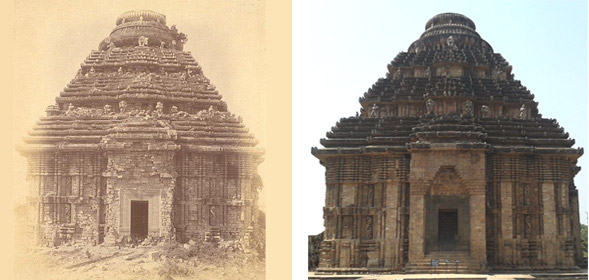
The main entrance to the Jagamohana is the eastern doorway with beautifully carved door frame in chlorite stone. The eastern doorway is the best preserved one among the other doorways. The seven horses, those are pulling the Konark Sun temple are arranged on the eastern stairway of the Jagamohana, four horses on the south and three on the north. The southern door frame is completely stripped off. The northern doorway is partially preserved and is still in position.
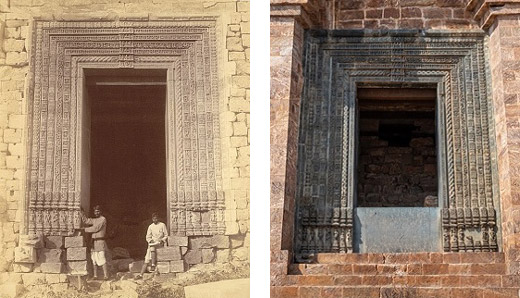
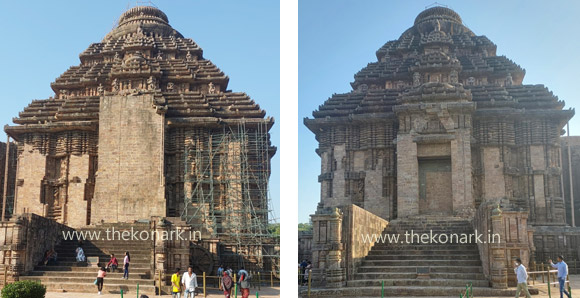
The upper level and terrace of the Jagamohana contain grander and more significant art works than the outer walls. The roof of Jagamohana is made of horizontal tiers grouped in three stages, having life-size standing female musician sculptures on the terraces of the bottom and middle tiers with the accompaniment of musical instruments such as cymbal, flute and drum. The outer wall of the Jagamohana is decorated with various male-female figures in various poses, naga-nagi and gaja-vidala figures.
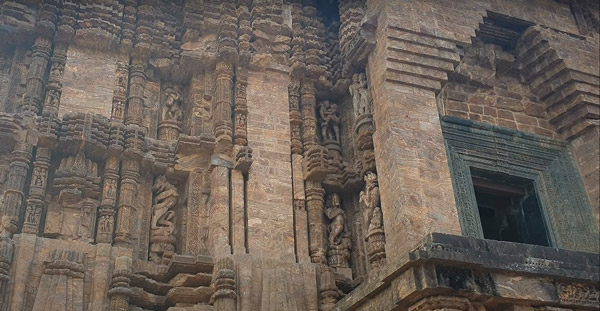
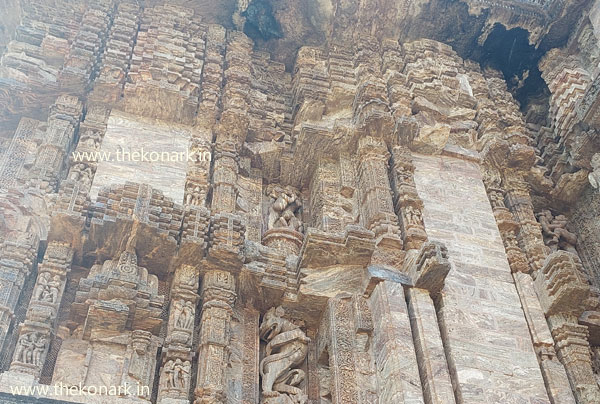
The Deula (main temple) and the Jagamohana stand on the same platform. The platform is about 4 meters in height. The face of the platform has five horizontal divisions. The platform is decorated with a wide variety of scenes and sculptures such as vidalas, naga-nagi figures, a royal person killing boar, hunting scene, laborer at work, female standing over flame of fire, a woman attacked by monkeys, old lady going on pilgrimage, a queen in the company of her attendants, male-female figures in various poses, figures of Hindu Gods & Goddesses, a king on elephant being presented with a giraffe by a group of men and lady waiting at door. The lower portion of the platform relieved with frieze of elephants (whose number is said to exceed 1600), war scenes, rows of geese, military procession, men and animals carrying supplies etc.
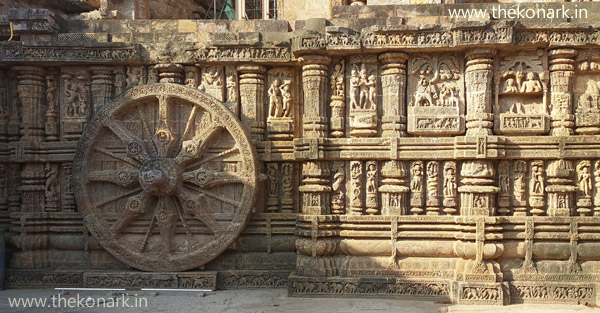
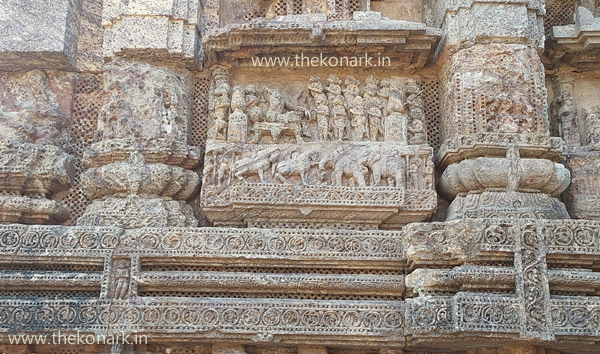
To ensure the stability of the 13th century monument, the British (India was under British rule at that time) started major conservation work in 1901. To avoid collapse, they took the ultimate step to preserve the Jagamohana, sealed all the entrance gates and filled the whole structure with sand. It took three years to complete this and we are fortunate enough that the Jagamohana is standing safely till date, since then there is no access into the interior of the Jagamohana. Please see below inscription of 1903 AD at the eastern doorway of the Jagamohana.
